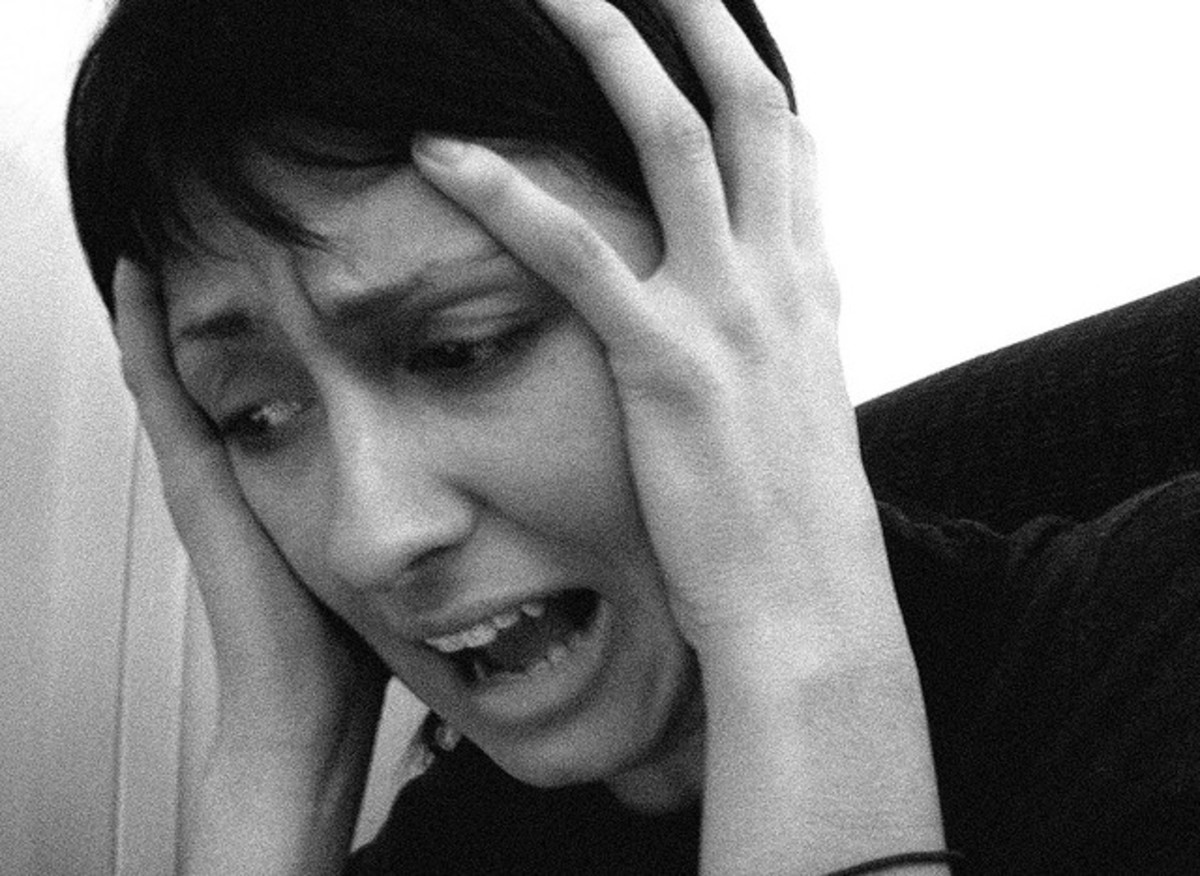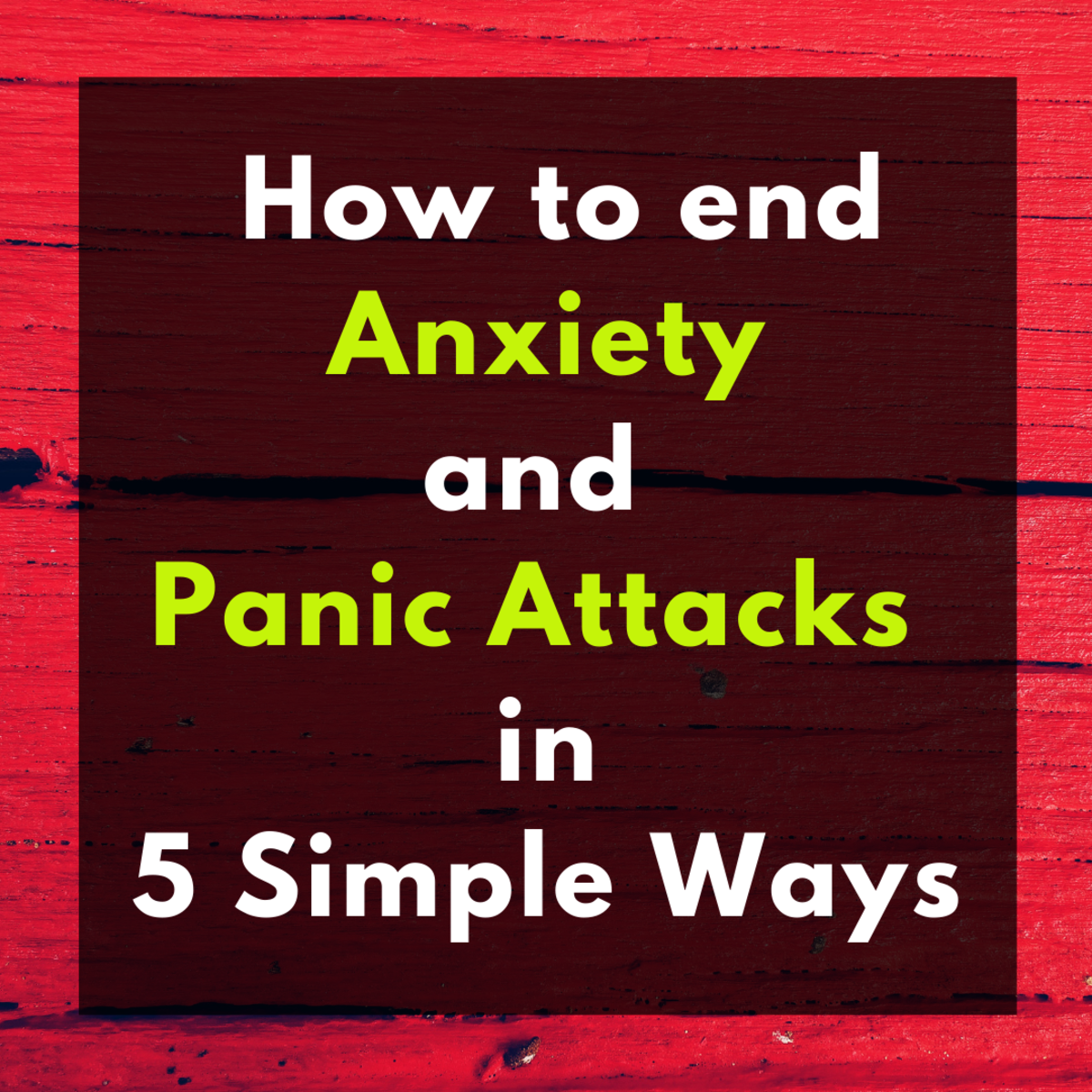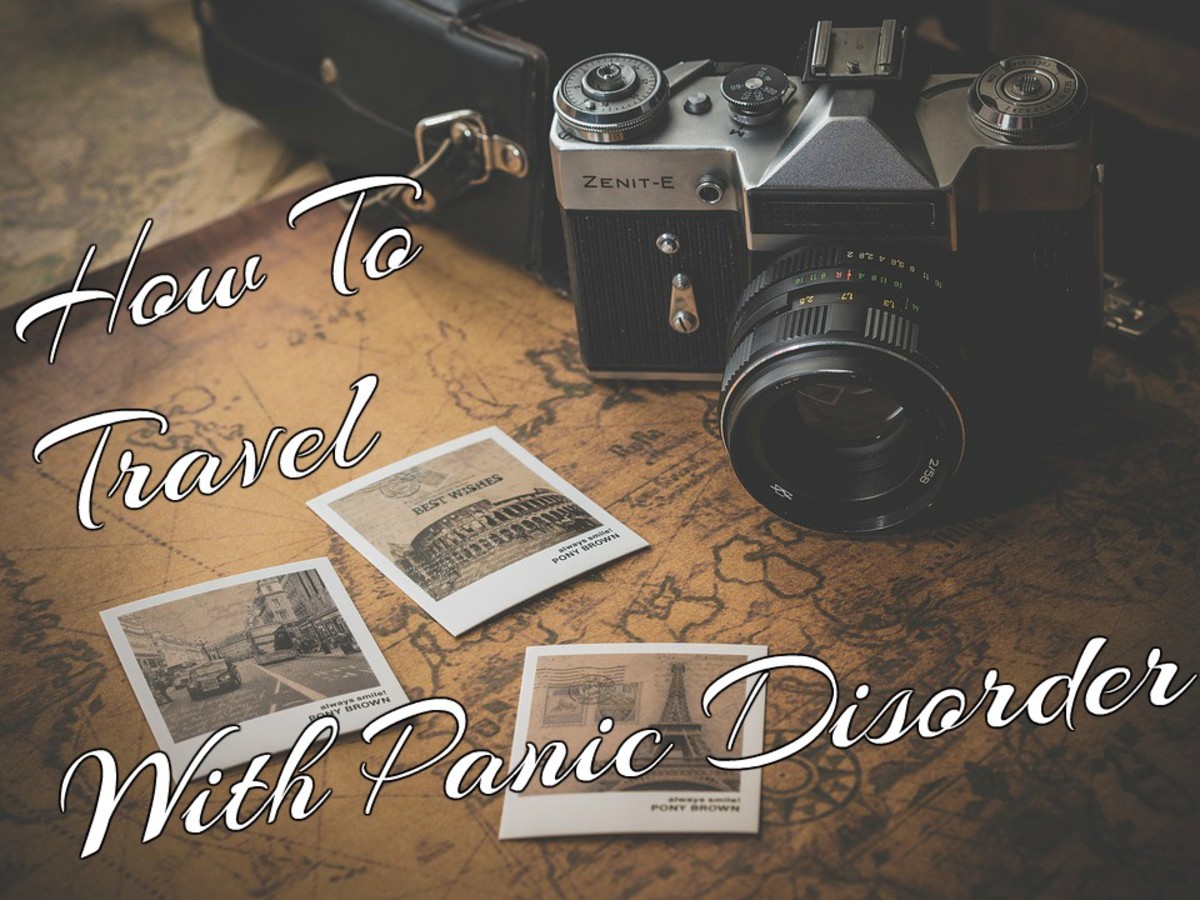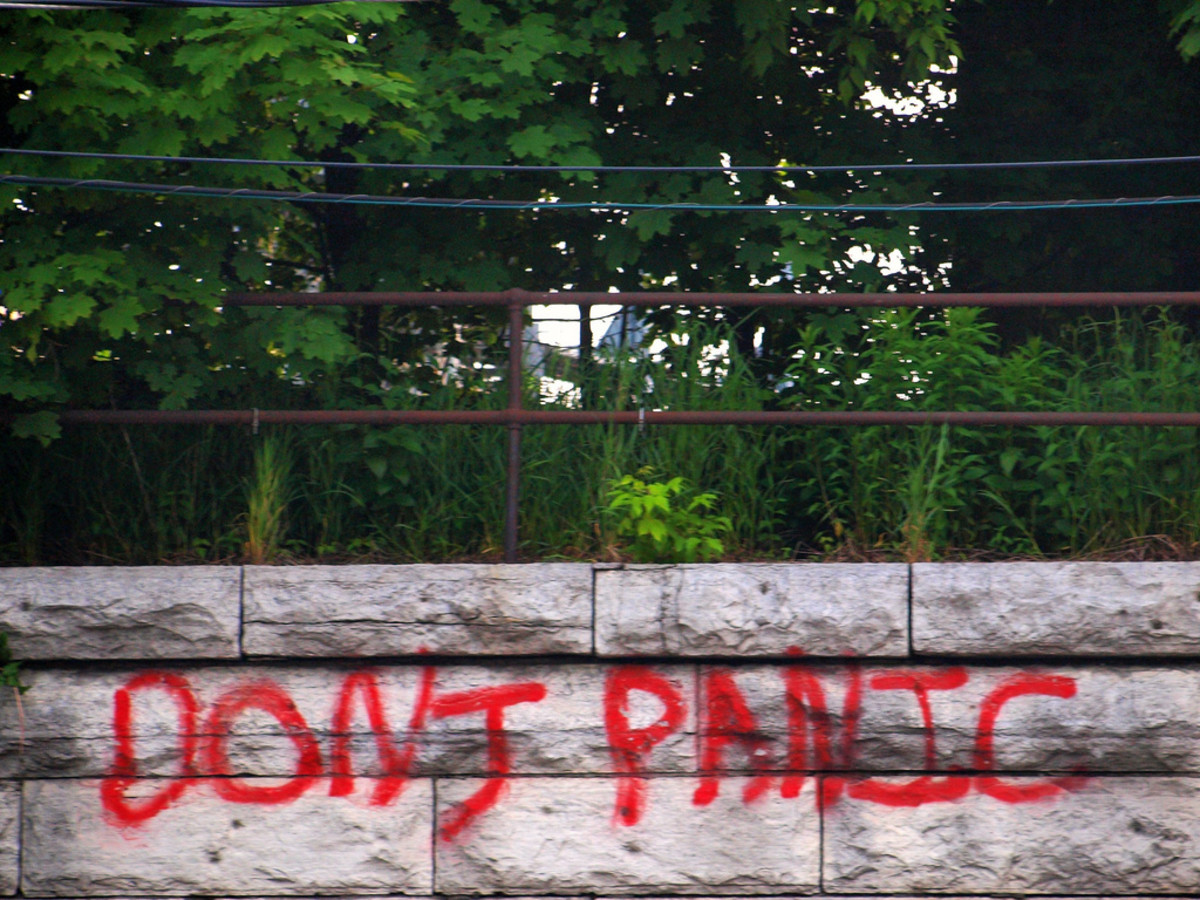- HubPages»
- Health»
- Mental Health»
- Anxiety Disorders
Using Mindfulness to Overcome Panic Attacks

Irrational Fears
Panic attacks can be extreme such as the case of a woman who has not left her home for over 20 years. She dropped out of school at 15, never married nor worked because she was too afraid to go outside and her mother took care of her for all these years.
Today she can walk to the front gate.
Tomorrow, as her therapy helps her to realise the irrationality of her fears and embeds new strengths in her mind, she will walk through that gate and finally begin her life.
Symptoms of Panic Attack
- Physical symptoms during an attack include
- a pounding heart,
- sweating,
- breathing problems,
- weakness or dizziness,
- feeling either hot or a cold chill,
- hands feel tingly or numb, and
- chest or stomach pain.
People with panic disorder live with an intense worry about when the next attack will happen. Every day they ask themselves how they feel and if they'll have a panic attack today.
A panic attack could happen to anyone, anywhere. Over time these fears become so strong that the sufferer completely avoids the place or situation where they initially developed this fear.
Anatomy of Panic Disorder
If a person has a panic attack while flying, they then become afraid as they believe they had the attack because they were on a plane.
While the memory of a panic attack is very vivid and real, it is just a memory and not happening now.
We need to learn how to break through the conditioned reactions that are triggered by a thought or it can lead to social avoidance greater than that caused by major depression.
Recent research shows that a strong genetic or hereditary component is behind panic disorders. Attacks can be triggered by stressful events or 'come out of nowhere'.
Many who experience a panic attack for the first time fear they are having a heart attack or nevous breakdown.
Panic disorder is often misdiagnosed as a thyroid problem, hypoglycaemia or a heart valve defect.
The good news is, that when it is correctly diagnosed, the panic disorder is a highly treatable condition, with the right combination of therapy 90% of people recover greatly, the remaining 10% can expect significant recovery.
In the extreme cases treatment usually includes a combination of medication, psychotherapy and self-help techniques.
Really it's just a Mirage
On a hot day, while driving or while looking at the surrounding scenery, it can appear as though there is water on the surface, but it is a mirage, it's the heat shimmering on the hot surface. So too with panic attacks.
Panic attacks are perceived as life threatening or a threat to your sanity, the forerunner of losing total control, however it is this fear of the symptoms that drive the disorder.
Recovery is a change in perception, not just changing the way you think about panic attacks and anxiety, it is about changing the way you see or perceive them.
Much of the distress felt is through negative thoughts, and you need to understand your thought processes and become mindful of what is happening. Thoughts are actually separate fleeting moments in time which need to be investigated to see how they affect your emotional well being.
Mindfulness cognitive technique is different from other cognitive techniques as it takes the thinker out of thought instead it teaches you to step back and observe your mind and thoughts. It gives you the space to see cause and effect as it happens.
Cause = thought - Effect = panic
When we can separate ourselves from our thoughts, we will have the building blocks for recovery and a new life.
In Mindfulness therapy, you learn how hold the emotion without becoming reactive to the emotion.
This basic change from, being consumed by an emotion, to one of observing the emotion as an object which can discharge itself is so empowering and as this effect is embeded in your brain, the beliefs lose their intensity and power over you.
Mindfulness Meditation
Whilst it is not possible to do this when having an attack, take a quiet period and practice sitting with your panic.
Meditate on the emotion itself, making it the focus of your awareness. In this deliberate way, you will start to develop a relationship with the emotion itself that is not based on reaction, but create the ideal inner place for change.
It is repeating this process of returning to the emotion and working on the not-reacting that enables you to break free from the pattern of reactivity and become stronger and more balanced.
Mindful meditating on the emotion creates the space in which the emotion will begin to transform itself.
How to Practice Mindfulness Meditation
Help to Stop a Panic Attack
However, if you experience the start of a panic attack, practice the following:
Pause, Observe, Experience and Allow.
When you notice the feeling of panic emerging, take a moment to breathe from you stomach and pause the breath to become present.
- Observe and experience your body sensations, feelings and emotions.
- Then allow them to be, giving space for them to go wherever they need to go.
You are learning to give space to the storm of panic by not reacting to it.
Reflect upon the fact that life is indeed made up of moments and a panic attack, which may seem like forever, is actually not very long.
Bring this practice into a panicky moment and take back control of your life.
Lifestyle Changes to Manage Panic Disorder
The following lifestyle changes may help you to manage the symptoms:
- Avoid Caffeine which is found in coffee, tea, chocolate and some soft drinks.
- Try to eat healthy whole foods and avoid fast food.
- Only take drugs prescribed or approved by your doctor.
- Avoid Alcohol as it may exacerbate your feelings of anxiety
- Get plenty of rest to help you feel relaxed
- Schedule quiet time for yourself each day. This will help to release stress.
- Look after your friends that have a positive outlook
- Distance yourself from people who are negative.








